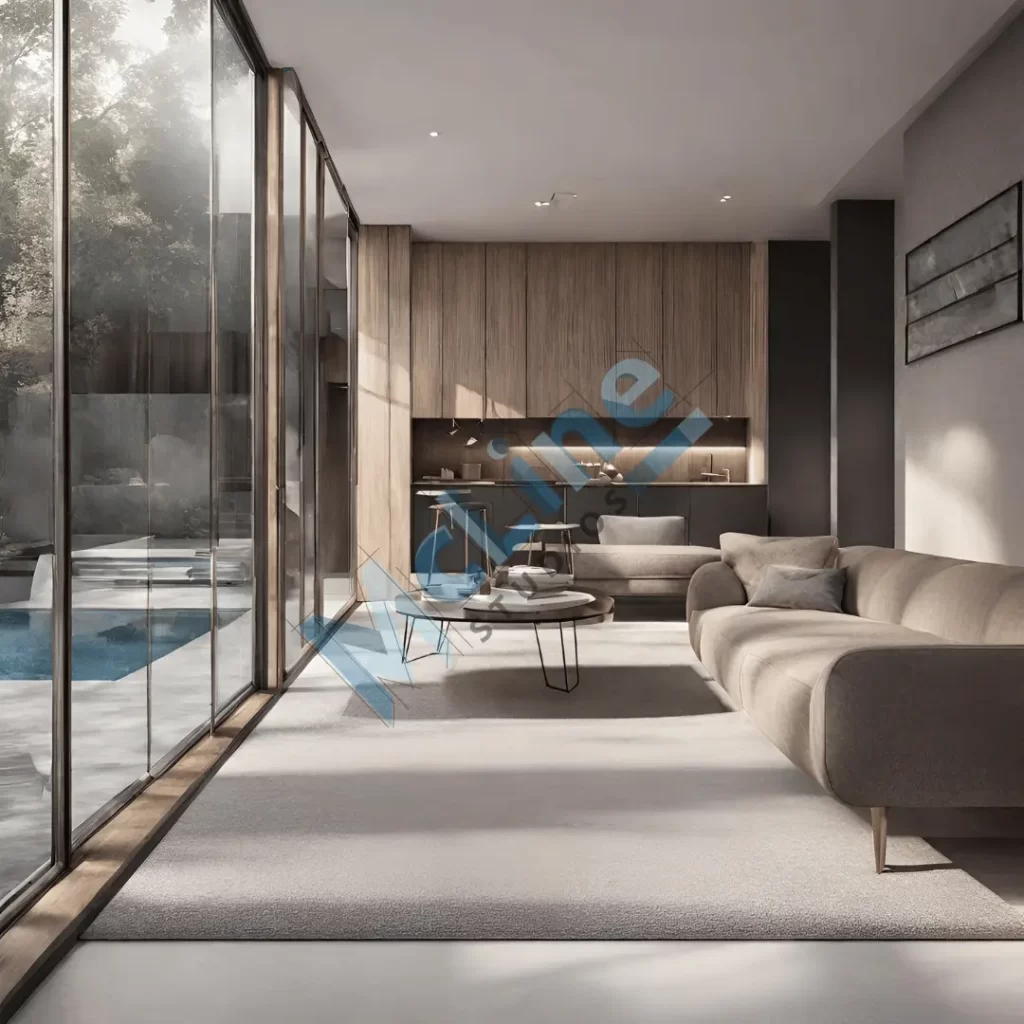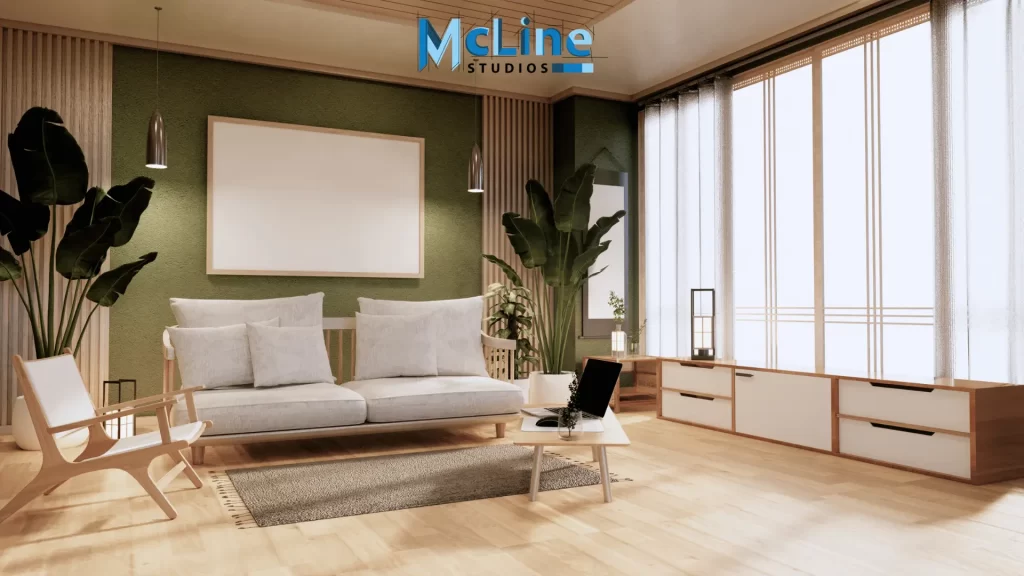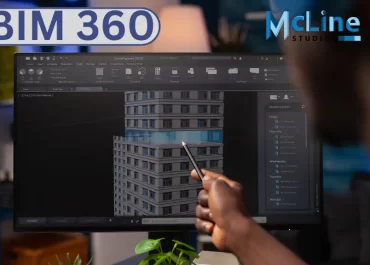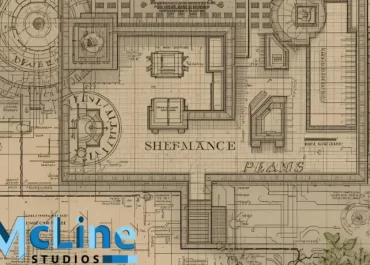CGI has revolutionized architectural visualization and design over the past few decades. From 3D modeling software to real-time render engines, new technologies have enabled architects to instantly visualize and walk through photorealistic digital models of their building designs. CGI rendering allows for rapid prototyping and exploration of form, space, materials, and lighting at a fraction of the cost and time of physical modeling.
From conceptual sketches to intricate details, CGI rendering transcends the boundaries of conventional design, offering a captivating journey through the virtual landscapes that define tomorrow’s architectural marvels.
This article explores the evolution of CGI Rendering in architecture, from early wireframe models to today’s immersive virtual reality experiences. It examines key software and hardware advances that have shaped CGI’s capabilities and adoption.

What is CGI Rendering in Architecture?
CGI (computer-generated imagery) rendering is an essential visualization process in modern architecture. It involves using specialized 3D software to create photorealistic renders of architectural designs. Architects use CGI rendering to communicate ideas immersively to clients and evaluate designs in realistic contexts during planning.
The workflow starts with 3D modeling architectural forms. Materials, lighting, textures, and environmental effects are added to make the renders look like real photographs. Dramatic lighting and stylized effects may be used for marketing. Renders visualize spatial qualities, material finishes, reflections, and contextual elements like landscaping.
Key software capabilities are modeling, adding surface textures, setting up camera views, lighting scenes, applying material properties, and generating photorealistic output through rendering. Photoshop is used for post-production polish. The process requires artistic and technical skills for modeling, lighting, and achieving photorealism accuracy.
While more flexible and cheaper than photography of scale models, CGI rendering is still time-intensive. Long render times and computational power needs can be challenging. But quickly updating designs makes it more efficient than rebuilding physical models. Overall, CGI visualization is crucial for architects to showcase and evaluate designs in an immersive, photorealistic way.
Purpose of CGI Rendering in Architecture
CGI rendering is commonly used in architecture for visualizing and presenting design concepts. Some key purposes and benefits of CGI rendering in architecture include:
- Visualization and Presentation: CGI rendering allows architects to create realistic visualizations of their designs before they are built. This helps in presenting ideas to clients, stakeholders, and the public in a compelling and visually appealing way. It enables a better understanding of the final product, helping clients make informed decisions and providing a powerful tool for marketing and communication.
- Design Development: Architects often use CGI rendering as a design development tool. It allows them to experiment with different design options, materials, lighting, and spatial arrangements in a virtual environment. This iterative process helps refine the design before any physical construction begins.
- Client Communication: CGI rendering is a powerful medium for communicating design concepts to clients who may not have a background in architecture or design. It helps bridge the gap between technical drawings and the client’s understanding, fostering effective communication and collaboration.
- Marketing and Advertising: High-quality CGI renderings are frequently used in marketing materials, brochures, websites, and other promotional activities related to real estate and architectural projects. Compelling visuals can attract potential buyers or investors and generate interest in a project.
- Regulatory Approval: In many cases, architectural projects require approval from regulatory authorities. CGI renderings can be used in presentations and submissions to convey the proposed design in a clear and comprehensive manner, aiding in the approval process.
CGI rendering in architecture is a versatile tool that enhances the design process, facilitates effective communication, and contributes to the overall success of architectural projects.
How CGI Rendering Works in Architecture?
CGI rendering plays a crucial role in architecture by providing realistic visualizations of architectural designs before they are built. The process involves creating digital images or animations from 3D models of architectural structures. Here’s a step-by-step overview of how CGI rendering works in architecture:
- Create 3D Model
Architects or 3D artists start by creating a detailed three-dimensional model of the architectural design using specialized software like AutoCAD, Rhino, SketchUp, or 3ds Max. This model includes all relevant details, such as geometry, materials, textures, lighting, and landscaping.
- Apply Materials and Textures
Surfaces in the 3D model are assigned appropriate materials and textures to simulate real-world appearances accurately. This includes applying textures for walls, floors, roofs, and any other architectural elements.
- Set Up Lighting
Lighting plays a crucial role in CGI rendering. Virtual light sources are positioned and configured to mimic natural or artificial lighting conditions accurately. This involves adjusting parameters like intensity, color, and direction to achieve the desired ambiance and realism.
- Camera Placement
The virtual camera is positioned to capture the desired views of the architectural design. Parameters such as focal length, depth of field, and perspective are adjusted to achieve realistic and aesthetically pleasing compositions.
- Render the Scene
The 3D model, with all its materials, lighting, and camera settings, is then processed through rendering software. This software calculates the interaction of light with surfaces, shadows, reflections, and other visual elements to generate a 2D image or sequence of images (frames).
- Post-Processing
After the initial render, post-processing is often applied to enhance the final result. This can involve adjusting colors, contrast, and brightness, and adding effects like depth of field or lens flares. Post-processing is typically done using image editing software such as Adobe Photoshop.
- Final Output
The final CGI render is then ready for presentation. It can be used in architectural portfolios, presentations, marketing materials, or client reviews. Animations can also be created by rendering a sequence of frames to showcase different perspectives and movements.

Future of Architectural CGI Rendering
The future of architectural CGI rendering holds exciting prospects driven by technological advancements and evolving industry demands. As hardware capabilities continue to improve, rendering software is poised to deliver increasingly realistic and immersive visualizations.
The integration of artificial intelligence and machine learning into rendering processes will enhance efficiency, automating aspects of scene creation and optimization. Real-time rendering technologies will become more prevalent, allowing architects to interact with and modify designs instantly, fostering a more iterative and collaborative design process.
Furthermore, the rise of virtual and augmented reality applications will transform the way stakeholders experience architectural visualizations, offering immersive walkthroughs and virtual environments for enhanced spatial understanding. The future may also see a shift towards more sustainable practices in rendering, with a focus on energy-efficient algorithms and eco-friendly rendering solutions.
As the demand for high-quality, photorealistic renderings grows, the architectural CGI rendering industry is likely to witness continuous innovation, pushing the boundaries of visual representation and contributing to a more dynamic and accessible design workflow.
Conclusion
In conclusion, CGI rendering has revolutionized architectural visualization, enabling architects to bring designs to life through photorealistic 3D renderings and animations. CGI allows seamless integration between physical and digital models, facilitating greater experimentation and refinement of designs.
It also enables more effective communication with clients and the public by providing immersive visualizations that convey spatial qualities far better than traditional models or drawings. As CGI technology continues advancing alongside VR and AR, its potential will stretch even further. Architects may one day design fully in virtual environments.
While still in the early stages, CGI has already profoundly changed architectural visualization, empowering architects to share creative visions like never before. In just over two decades, CGI has become an indispensable tool for architects to imagine, experiment with, and share their ideas.
If you’re looking for professional CGI rendering services in the USA, then McLine Studios is the right place for you! McLine Studios is a Delaware, USA-based company providing drafting solutions to Architects, Builders, Contractors, Subcontractors, and manufacturers around the world. Within this time, because of our quality of work and quick turnarounds, we were able to serve many companies across the nation.




